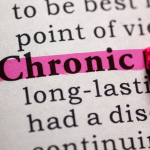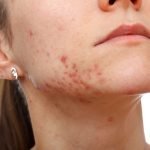Rethinking How We Support Naturopathic Academic Medicine
David J. Schleich, PhD
Our schools are foundations as well as anchors for the profession. For a generation now, naturopathic medicine has resumed its location with more vigor in the waiting rooms of professional formation. How we structure the education of our new physicians affects the future of that formation very fast in these times. Seymour Papert, the eminent educator whose ideas are built on the work of Jean Piaget, explained constructionism as a mnemonic with 2 aspects:
From constructivist theories of psychology we take a view of learning as a reconstruction rather than as a transmission of knowledge. Then we extend the idea of manipulative materials to the idea that learning is most effective when part of an activity the learner experiences as constructing a meaningful product. (Papert, 2002, p. 37)
A special burden for our deans and teachers is that their teachers and their graduates have urgent, meaningful products in their backpacks. As our students finish their NDs, pass the Naturopathic Physicians Licensing Examinations, and then go forward into the landscape of so-called integrative medicine, they have one eye on making a living and one eye on defending their professional scope from those who populate that terrain and either want to outsource some of what our graduates have or do not want them there at all. Unlike, say, an MD, a DO, a PA, or even an NP, the ND is not moving smoothly in most cases onto the well-beaten paths of the health professions. Our graduates have the added challenge of navigating a workplace that does not entirely understand their philosophy, their mission, their passion. Circle back to our teachers. They have that challenge too.
At the same time, while they are in school, our soon-to-be graduates and their teachers are affected by the same whiplashing that higher education is experiencing everywhere in North America and among all professions. Papert reminds us of Einstein’s admonition not to solve such current dilemmas using old paradigms when he made the following suggestion:
If the way we think of change is limited by imagining things very much like the ones we know (even if “better”), or by confining ourselves to doing what we know how to implement, then we deprive ourselves of participation in the evolution of the future. It will creep up on us and take us unawares. (Papert, 2002, p. 12)
Last month, I wrote about that same volatile higher education terrain in which student debt, online learning, jobs, and competition are straining our efforts at professional formation. There are tools out there that help us to figure out the health workforce job market (and many future jobs actually). For example, there is the Institute for Prospective Technological Studies (2011), whose reports and upcoming symposia are well worth scouting. In any case, when we focus on the rapidly changing nature of emergent work, roles and identities can confuse healthcare consumers about who to approach and for what. Illustrating the quickening pace of this confusion, the widely viewed “slideshare” presentation “Shift Happens” declared: “We are currently preparing students for jobs that don’t yet exist . . . using technologies that haven’t been invented . . . in order to solve problems that we don’t even know are problems yet” (Brenman, 2007).
A further example of this universe can be seen in the nifty, powerful California venture launched a few years back by Salamon Khan. His nonprofit organization, the Khan Academy, is well known by our students and teachers. It is populated by several thousand short interactive videos covering useful curriculum that learners can access anywhere, reviewing, pausing, and repeating at will. Khan’s online content demonstrates unequivocally that threat and failure and expense are diminished in this world of open access and non–time and place–bound learning, so different from institutionalized knowledge production and dissemination. The multitude of learning networks like the Khan Academy, including massive open online courses, webinars, streamed credit courses, and the like, challenge the traditional role and craft of the teacher in incremental ways that are being increasingly felt in our schools. The authority for granting “credits” and “admitting” learners into professional life is blurring, as are governance and accountability. The way into professions will diversify in our time in this rapidly moving environment of market-led change.
What is likely is that, as funding structures and higher education regulation shift, direct public monitoring (through accreditors, for example, or state systems of curriculum regulation) is inevitably going to be displaced. The impetus shows up in our bookstores (where textbook sales are plummeting), in the expectations of our new cohorts who are matching degree cost with the payback period, and in the uneasy questions our teachers have about their own futures. It is our teachers I am most worried about because they make or break the friendly or unfriendly future for which our students are preparing.
Across my 35 years in higher education, as a teacher myself and now as an administrator, what I know to be true about our naturopathic medical educators is as follows:
- They are strongly committed to naturopathic students and to their learning.
- They know their content, despite the avalanche of new information, and they know how to teach this content to their students.
- They manage and monitor what and how their students learn.
- Invariably, they think systematically most often about their craft, although our ways of engaging them discourage the same systematic attention to sustained clinical practice.
- They value and enjoy being part of learning communities, although our structures do not enrich this opportunity consistently.
Our teachers are the key agents in challenging and reshaping political and public perceptions as to what naturopathic medical education is for. Our schools have been in so many ways bastions of hope for rebuilding and continuously strengthening professional formation without yielding to dilution, redirection, and assimilation. It is the inspiration of our teachers, working hand in hand with our researchers, as well as with politicians and policy makers, that makes that future friendly.
We must rekindle and assure a rich learning experience for our students and teachers during this time when the gates of the naturopathic medical education city are under siege. There are numerous challenges that the newly reengineered Association of Accredited Naturopathic Medical Colleges and the collectivity of our deans and faculty can pull off.
We must become more deliberate about how to measure and communicate our success. Potential students need to know that the roots and traditions of the medicine to which they have been attracted are safe and deepening and that contemporary training and licensing obligations can be met at the same time. Potential students need to see that we are looking out for them in terms of preceptorships, residencies, placements, cooperative work, full-time jobs, and further training.
We have to accelerate digital learning, while reinventing our brick-and-mortar schools, as 24/7 learning and support hubs for students, graduates, and teachers. We have to reengineer naturopathic medical education itself as a well-paid career with many pathways, where teaching expertise is constantly spreading its utility and range.
We need a leadership hub, likely housed within the Association of Accredited Naturopathic Medical Colleges, of classroom and clinic experts who, while they do their critical work of teaching our students, also have space and time to be teacher educators, researchers, and community organizers. They must feel that they are recognized, supported trustees of the naturopathic profession itself, and of the naturopathic academic medicine profession.
Learning (and therefore teaching) is becoming more personalized even in the professional preparation arena. As Redecker et al. explained, “the one-size-fits-all teaching method is becoming more and more outdated” (2011, p. 44). We must back our teachers in a call for action to make learning happen in multiple modalities, paying attention to the swarm of synchronous and asynchronous, time and place–bound, virtual, local, and global learning (Caroll & Resta, 2010). Our teachers are already accomplished mentors; however, a flood of open content is prodding teachers to be on top of the way students actually learn and study, day to day (Johnson, Adams, & Haywood, 2011). To help this effort, we have to invest more resources in teacher training (Cachia, Ferrari, Ala-Mutka, & Punie, 2010).
Naturopathic faculty have been warning us for as long as I can remember that our schools and programs are not going to remain the major source of knowledge transmission for naturopathic medicine, a role long taken for granted. The traditional association of learning with specific spaces (such as classrooms) is becoming “de-linked as time and place constraints for connectivity are abolished” (Miller, Shapiro, & Hilding-Hamann, 2008, p. 113). As Johnson, Adams, and Haywood also point out, “[I]ncreasingly, information is stored outside school servers and acceptance and adoption of cloud-based applications and services is [sic] changing the way information is conceptualized in education” (2011, p. 192).
Accredited schools and programs are instrumental in maintaining the social and professional capital of naturopathic academic medicine. To stay that way, we have got to situate them, as Redecker et al. explained, “within the context of the future labor market requirements, so as to be flexible in responding to individual learners’ needs” (2011, p. 136). In more than one faculty workshop I have attended, the best and the brightest among our teachers point to the need for reskilling our students and our teachers for what Redecker et al. said is a future in which education “will be influenced by a need for new skills which are ‘generic, transversal and cross-cutting,’ through which learners will be able to benefit as part of their lifelong learning path” (Redecker et al., 2011, p. 139). Johnson, Adams, and Haywood explained that this means
a major shift from knowledge to competencies, namely: problem-solving, reflection, creativity, critical thinking, learning to learn, risk-taking, collaboration and entrepreneurship. In addition to these competencies, in a world where information is everywhere, mentoring and preparing students to be able to assess credibility of information and make sense of it should be high on the education agenda. (2011, p. 197)
Ala-Mutka et al. recommended that these changes also mean that “teachers will need to be able to re-skill their competencies, so as to keep updated with changes and be . . . respondent to fast changing working environment[s]” (2010, p. 50). The pressures on our faculty include an intensification of expectations on themselves, a process that over time can either bruise or bolster (depending on how we structure the experience) their professional autonomy, effectiveness, and self-confidence. The more we mandate specified curricula to match up with accreditors’ and licensing specifications, the more we prescribe methodology, and the more we expect our teachers to be savvy about our students’ academic and social needs, the greater is the burden on them. Many of our deans have seen concerns arise about fatigue, and even a rise in chronic health issues as a kind of material and emotional dissonance grows between what we can accomplish in 12 quarters and what the market demands. These trends, coupled with the reorganization of our teaching milieux from individual “craft-based” teaching and learning spaces to a more tailored framework, chip away at our teachers’ energy and resolve and feed dissatisfaction.
Invariably, if our teachers do not feel themselves as part of a profession (how many Council on Naturopathic Medical Education–accredited school faculty are members of the American Association of Naturopathic Physicians and of their state associations, for example, or even attend their conventions?), it becomes easier to target them as outsiders, as marginalized and not linked to what the profession needs, and as not linked to the roots of that profession. These charges come and go, but we are at a time when new pressures to orchestrate teaching and learning outcomes to get our graduates ready for the world of SOCs, primary care physician status, and survival in unlicensed jurisdictions using public domain therapies and treatments have not been as urgent since the 2 decades after Flexner.
Whatever strategy we create and whatever path we fund to meet these challenges, we will want guidelines to be part of the equation such as, say, those determined by the Organization for Economic Cooperation and Development as being the most helpful to teachers worldwide in improving their practice (Schleicher, 2011). In descending order of impact, based on a sample of teachers from a variety of countries, those guidelines for teacher support and development include the following:
- Individual and collaborative research
- Qualification programs
- Reading professional literature
- Courses and workshops
- Professional development networks
- Mentoring and peer observation
These are not news to the naturopathic academic medicine professional. We know what we have to do.
 David Schleich, president of Truestar Health, is the former CEO and president of Canada’s accredited Canadian College of Naturopathic Medicine, where he served from 1996 to 2003. His previous posts have included appointments as vice president academic of Niagara College, and administrative and teaching positions at St. Lawrence College, Swinburne University (Australia) and the University of Alberta. His academic credentials have been earned from the University of Western Ontario (BA), the University of Alberta (MA), Queen’s University (BEd) and the University of Toronto (PhD).
David Schleich, president of Truestar Health, is the former CEO and president of Canada’s accredited Canadian College of Naturopathic Medicine, where he served from 1996 to 2003. His previous posts have included appointments as vice president academic of Niagara College, and administrative and teaching positions at St. Lawrence College, Swinburne University (Australia) and the University of Alberta. His academic credentials have been earned from the University of Western Ontario (BA), the University of Alberta (MA), Queen’s University (BEd) and the University of Toronto (PhD).
References
Ala-Mutka, K., Redecker, C., Punie, Y., Ferrari, A., Cachia, R., & Centeno, C. (2010). The future of learning: European Teachers’ Visions: Report on a foresight consultation at the 2010 eTwinning Conference, Seville, 5-7 February 2010. Seville: Institute for Prospective Technological Studies, Joint Research Centre, European Commission.
Brenman, J. (2007, March 28). Shift happens. Retrieved February 16, 2013, from http://www.slideshare.net/jbrenman/shift-happens-33834
Cachia, R., Ferrari, A., Ala-Mutka, K., & Punie, Y. (2010). Creative learning & innovative teaching: Final report on the Study on Creativity and Innovation in Education in the EU Member States (No. EUR 24675). Seville: Institute for Prospective Technological Studies, Joint Research Centre, European Commission.
Caroll, T., & Resta, P. (2010). Redefining teacher education for digital-age learners. Summit report from the Invitational Summit on Redefining Teacher Education for Digital-Age Learners. Retrieved February 16, 2013, from http://redefineteachered.org/sites/default/files/SummitReport.pdf?q=summitreport
Institute for Prospective Technological Studies. (2011). The future of learning: New ways to learn new skills for future jobs. Retrieved February 16, 2013, from http://is.jrc.ec.europa.eu/pages/EAP/ForCiel.html
Johnson, L., Adams, S., & Haywood, K. (2011). The NMC Horizon Report: 2011 K-12 edition. Austin, TX: The New Media Consortium.
MacBeath, J., & Townsend, T. (2011). International handbook of leadership for learning. Rotterdam: Springer.
Miller, R., Shapiro, H., & Hilding-Hamann, K. E. (2008). School’s over: Learning spaces in Europe in 2020: An imagining exercise on the future of learning. Retrieved February 17, 2013, from http://ftp.jrc.es/EURdoc/JRC47412.pdf
Papert, S. (2002). The children’s machine: Rethinking school in the age of the computer. New York: Basic Books.
Redecker, C., Leis, M., Leendertse, M., Punie, Y., Gijsbers, G., Kirschner, P., Stoyanov, S., . . . Hoogveld, B. (2011). The future of learning: Preparing for change: Joint Research Centre–Institute for Prospective Technological Studies. Retrieved February 17, 2013, from http://ipts.jrc.ec.europa.eu/publications/pub.cfm?id=4719
Sabelli, N. (2008). Constructionism: A new opportunity for elementary science education. Division of Research on Learning in Formal and Informal Settings (DRL), 193-206. Retrieved February 16, 2013, from http://nsf.gov/awardsearch/showAward.do?AwardNumber=8751190
Schleicher, A. (2011). Andreas Schleicher: Deputy director for education and skills and special advisor on education policy to the OECD’s secretary-general. Retrieved January 22, 2013, from http://www.oecd.org/education/highereducationandadultlearning/andreasschleicher-deputydirectorforeducationandspecialadvisoroneducationpolicytotheoecdssecretary-general.htm









